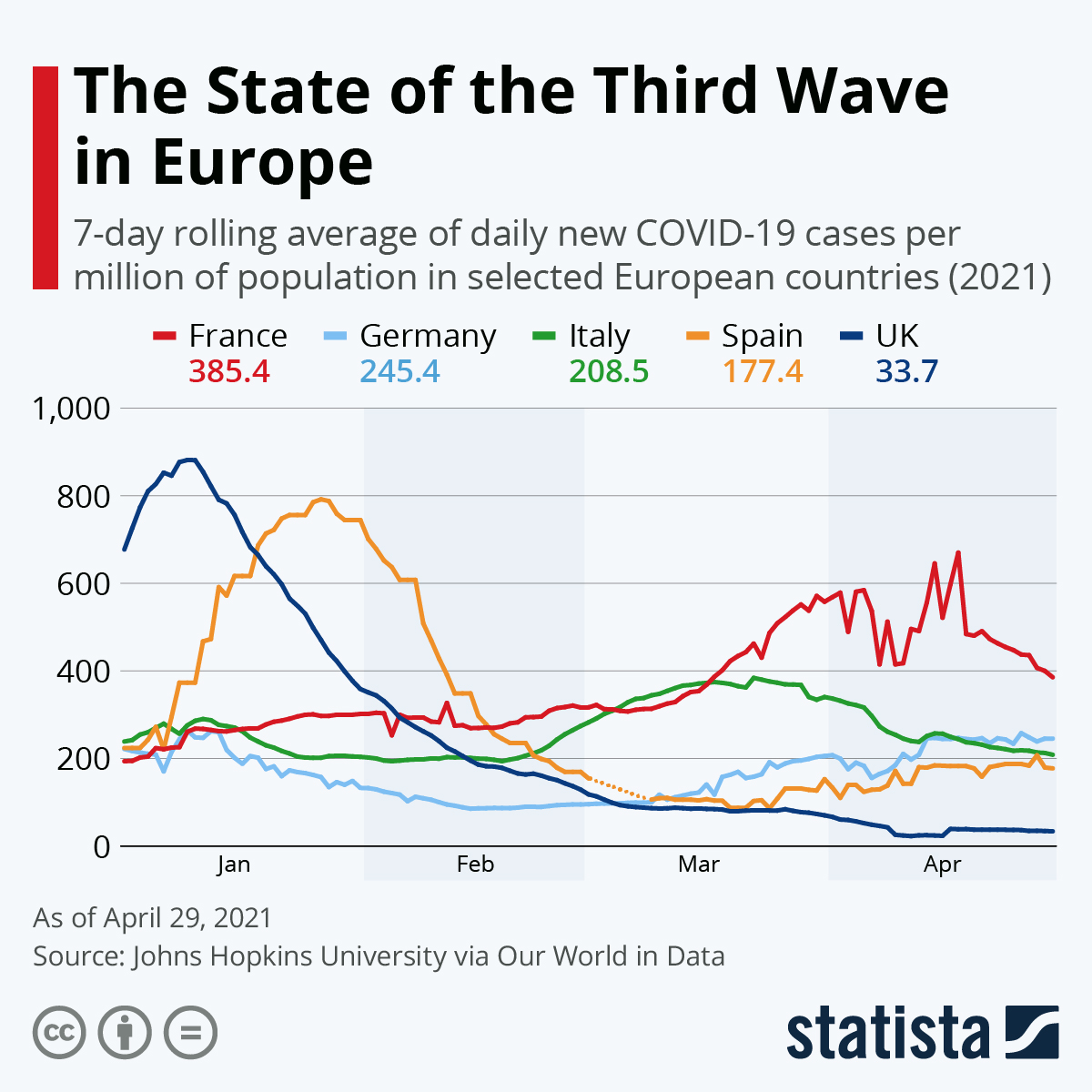Are European Countries Flattening The Curve?
As the coronavirus spreads rapidly around the world, Statista's Katharina Buchholz notes that some European countries have begun flattening the curve of infections.
According to numbers by Johns Hopkins collected by the website Worldometers, the start to a flattening is especially visible in Germany, where a total of around 150,000 cases had been recorded most recently.
You will find more infographics at Statista
In Italy and France, where there are currently almost 190,000 and 160,000 cases respectively and public life has shut down, some progress has also been made. Spain has had the steepest curve despite also adhering to a strict lockdown. There are more than 210,000 known infections in the country.
The UK, where the outbreak started later, does not yet show any signs of infections slowing down. The same is true across the pond in the U.S., currently the country with most known infections and a curve that is still pointing upwards. Infections are nearing 850,000 stateside.
The countries' collective aim is to "flatten the curve" of infections. While South Korea was able to (more or less) stabilize its outbreak at around 10,000 cases - due to widespread free testing (including the now infamous drive-thru testing), quarantine measures and the harnessing of mobile technology for public information - China has stabilized theirs at around 83,000 cases. South Korea hit 100 cases on February 20 and managed to leave the steep upward trajectory around 14 days later. In the case of China, more than 100 cases were first recorded on January 20, and quarantine and testing measure succeeded in breaking the upwards trajectory by February 12 - around three and a half weeks later. European countries and the U.S. are already three to five weeks into their respective outbreaks and are now beginning to level curves in some places.
https://ift.tt/2W1YujN
from ZeroHedge News https://ift.tt/2W1YujN
via IFTTT





0 comments
Post a Comment